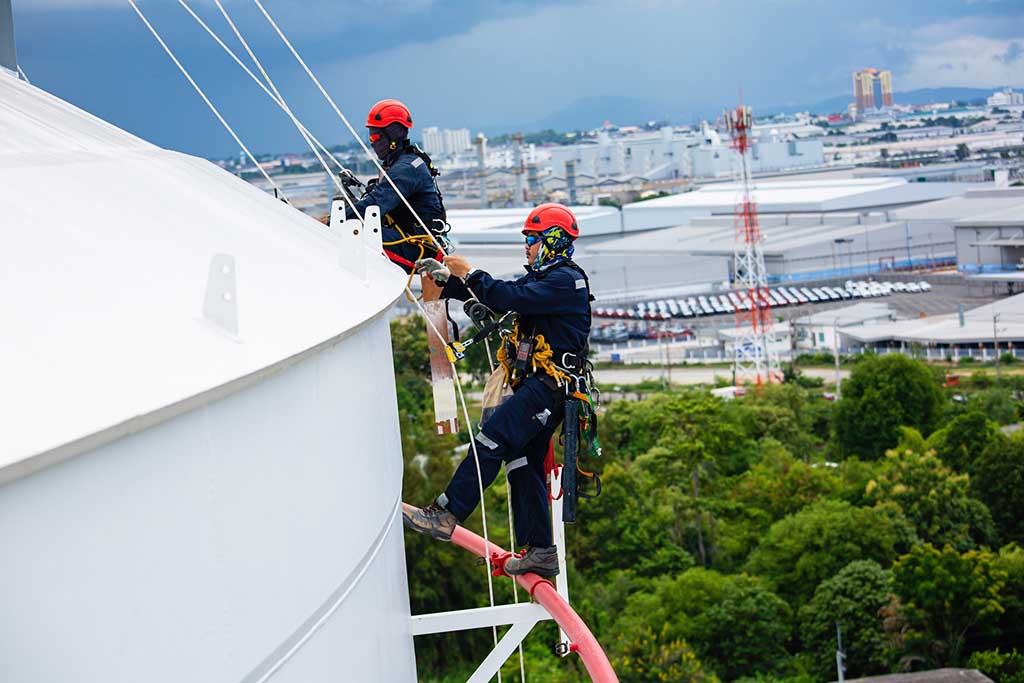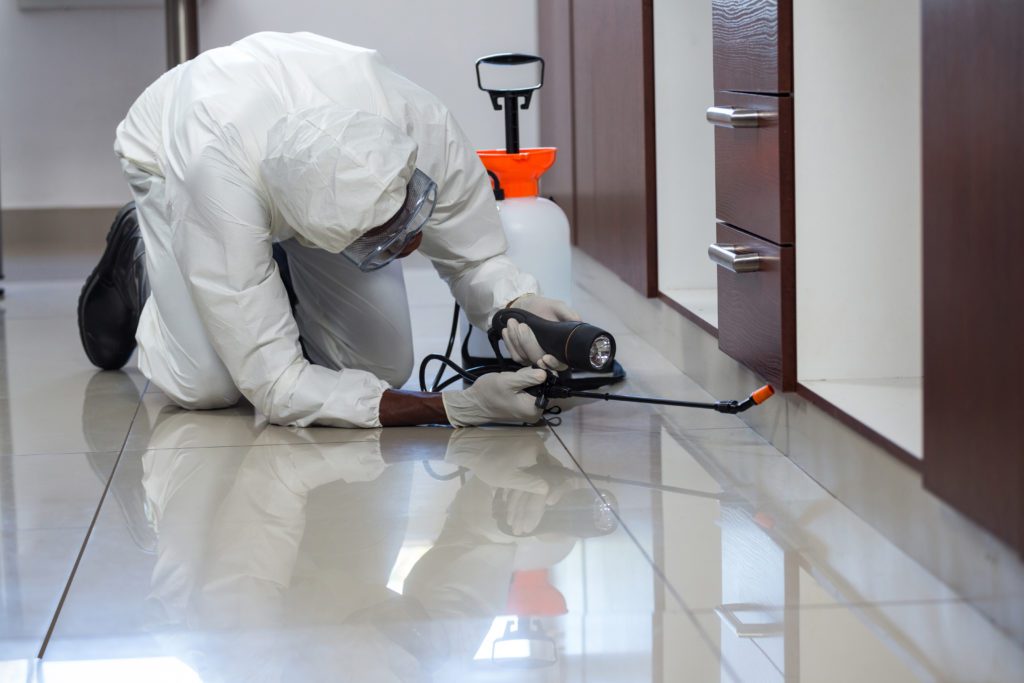Pest Control
Frequently Asked Questions
Navigate
Termites FAQs
What are termites?
Termites are wood-destroying insects. Their presence dates back to the dinosaurs era. While they play an important role in nature, experts estimate they cause RM 4 millions of property damage each year.
Are there different kinds of termites?
Yes, the two major kinds of termites in the Malaysia are drywood and subterranean(underground). Both are covered by AITO ArtClean. Drywood termites, is very common in Malaysia as majority of house in rural area are made from wood. Subterranean termites require moist environments, live mainly in the soil and are the most destructive species among all type of termites and very common in Malaysia.
How do you recognize termites?
Depending on where you live, termite swarms may be visible in your house. Termites are often confused with flying ants. Signs of termite infestation include soft wood in the home, mud tubes on the exterior of your home (often near the foundation) and darkening or blistering of wood structures.
How much damage do termites cause?
Termites eat 24 hours a day, 7 days a week, meaning damage to wood in and around a structure can happen very quickly. By the time you realize the destruction they made, it will cost you a lot of money. The good news is that termites can be controlled with the partnership of a trained pest professional.
When does a homeowner see termites?
Homeowners are most likely to notice termites when they swarm in during a rainy season. A termite swarm is a sign of a likely infestation. If you notice a termite swarm on your property, contact a licensed pest professional promptly.
What can a homeowner do to prevent termites?
There are many steps a homeowner can take to help prevent termites from infesting their property. Most importantly, a homeowner should eliminate or reduce moisture in and around their home, which termites need to thrive. Divert water away from your home’s foundation by installing properly functioning downspouts, gutters and splash blocks. Reduce humidity in crawl spaces with proper ventilation. Trim vines, hedges and other vegetation to prevent them from blocking vents. Remove old form boards, grade stakes, tree trunks and roots near a building, as they may attract termites. In addition, maintain an 18-inch gap between soil and any wood portions of your home. Finally, routinely inspect the foundation of your home for signs of termite damage.
How are termites controlled?
Termites are not a pest that can be effectively treated by a homeowner. A licensed pest control professional will be able to recommend a course of action depending on many factors, including the area of the country that you live in, the size of your infestation, the termite species present and your home’s construction.
What is the most effective type of termites treatment?
AITO ArtClean are committed to providing highly effective treatment options for all pest issues. The most effective type of treatment depends on the severity of the infestation, the species of termite, and the location and construction of the home. A trained and licensed pest control professional can assess each infestation individually and recommend the most effective treatment plan.
How difficult are termites to treat?
Termites cannot be effectively treated by a homeowner on their own. Pest control professionals have the training, expertise and technology to eliminate a termite infestation. AITO ArtClean is equipped with efficient manpower, equipment, safe and bio-friendly chemical to make sure the threat is removed.
Bedbugs FAQs
Where have you been finding bedbugs?
These pests are not limited to any one specific type of resident. AITO ArtClean has experience the infestations everywhere including single family homes, multi-family housing, apartments, hotels, hospitals, schools and college campuses, office buildings, retail stores, movie theaters seats and even public transportation. Nowadays, even five-star hotels and high-end clothing stores are susceptible to infestation.
Why are bedbugs so hard to treat?
Bedbugs should not be equated with filth or sanitation problems — in hotels or in homes, for that matter. Bedbugs are very elusive and moving one place to one place. They are often found in other areas besides the bed. And they are hard to die. They can live for a year or more without eating and can withstand a wide range of temperatures from nearly freezing to 122 degrees Fahrenheit. Bedbugs can be controlled with vigilance, constant inspection and treatment by professional pest control companies.
What can a consumer do to protect themselves from bedbug infestations?
To prevent bedbug infestations, consumers need to be vigilant in assessing their surroundings. When returning from a trip, check your luggage and clothing. If you think you may have a bed bug infestation, contact a pest control professional.
Why are bedbugs an issue for hotels, visitors and homeowners?
Bedbugs leave itchy, bloody welts on human skin. Adult bedbugs can live for a year without eating, making them especially hard to control. Once inside a hotel or home, bed bugs spread rapidly from room to room – through pipes, in vacuum cleaners, on clothing and luggage. In a hotel, bed bugs can even spread to neighboring rooms, since guests are may end up moving to another room.
Are bedbugs just in beds?
Bedbugs are not just in beds. They can be in chair cushions, sofas, behind electrical outlets, cracks and crevices around boards, or even behind picture frames. In other words, they can be live pretty much anywhere.
How can you control bedbugs?
Any effective bedbug control strategy should start with a careful, thorough inspection by a pest control professional of all known and suspected spots where the bugs may be harboring. This is not a pest that can be controlled effectively with do-it-yourself measures. As they are discovered, the pest control professional will develop a treatment and control strategy with the customer depending on the extent of the infestation.
Can I get sick from bedbugs?
Bedbugs are not known to spread any diseases to humans. However, their bites can leave behind itchy, red welts which can become infected from scratching.
Stinging Insects FAQs
What types of pests are included in the stinging insect category?
Several pests are included in this category. The most well known are bees, wasps and hornets. Some species of ants, such as fire ants, are included in this category as well.
Are stinging insects considered as public health threats?
Stinging insects send 200 thousand people to the emergency room each year. Although they are not labeled as public health threats, like mosquitoes that spread dengue, they are certainly dangerous. Homeowners who suspect a stinging insect infestation should not attempt to control the infestation by themselves.
Why shouldn't homeowners try to control stinging insects without the help of a trained professional?
Many types of stinging insects, such as bees, which are social insects. They will sting to protect themselves and members of their colony. The insects give off pheromones, which cause other members of the colony to react as well. The chaotic reaction is too dangerous for a homeowner to address alone.
What will a professional do to control stinging insects?
AITO ArtClean will identify the and assess the location. After the type of pest is identified there are a variety of control methods that a professional could take. Many pest control professionals practice a new technique called integrated pest management, or IPM. This technique involves removing the pest’s food, water and shelter. In the case of stinging insects, this could involve cleaning up your yard and sanitizing outdoor areas including using a specific chemical which is safe to human and even baby. The professional will use appropriate steps and techniques to address the particular type of infestation.
What can a homeowner do to avoid an unwanted encounter with a stinging insect?
Homeowners can take a clue from the professionals and practice integrated pest management to avoid stinging insects and other types of pests. Again, it is important to consult a pest management professional to address an infestation correctly.
What are some tips to deal with stinging insects?
Be aware of stinging insect nesting areas, and use extreme caution when around them. Stinging insects can build their nests in attics, crawlspaces, building corners, under gutters, and under patios or decks. Seal exterior cracks and crevices to prevent insects from entering a structure and building nests. Stinging insects are attracted to open garbage cans and exposed food. Cover all food when outdoors. Be sure to keep tight fitting lids on garbage cans and empty them regularly. When spending time outdoors, avoid excessive use of fragrances, which can attract stinging insects. If you have an allergic reaction to an insect sting, seek medical attention immediately.
Mosquito FAQs
Are mosquitoes a real health threats?
Mosquitoes transmit at least three human diseases that have been found in the United States. All of them are potentially fatal. These diseases include Malaria and Dengue Fever.
What is Dengue?
Dengue fever is a mosquito-borne disease that affects nearly 3.9 billion people globally. Dengue remains endemic in Malaysia since its outbreak in the 1980’s, with its highest concentration of cases in the state of Selangor.
Where is Malaria found in Malaysia?
About one-third (32%) of total malaria cases occur in Peninsular Malaysia, and the majority of these are found in the central, south-eastern and northern coastal regions. The remaining 68 percent of cases are found in Malaysian Borneo, primarily the states of Sabah and Sarawak
What do you use to treat for mosquitoes?
Many homeowners erroneously believe that all pest management professionals do is spray chemicals to treat their homes. This is simply not true anymore. Many pest management professionals today use fogging technique. This approach consists of inspection, identification of the pests, employment of two or more control measures, and evaluation of effectiveness through follow-up inspections.
How often should a property be treated for mosquitoes?
The length of effectiveness is dependent upon several variables including temperature, humidity, surfaces treated, materials or control methods employed. The time lapse between treatments depends upon these factors and specifically the materials used
What can a homeowners do to reduce the risks from mosquitoes?
There are many ways a homeowner can reduce the risks from mosquitoes:
- Eliminate or reduce mosquito breeding sites by replacing all standing water at least once a week. This includes bird baths, ponds and swimming pools.
- Remove unneeded vegetation or trash from around any standing water sources that cannot be changed, dumped or removed.
- Introduce mosquito-eating fish such as gambusia, green sunfish, bluegills and minnows to standing water.
- Screen windows, doors, and other openings with fine mesh, sealing around all screen edges and keeping doors and windows shut to prevent entry.
- Avoid going outdoors when and where mosquitoes are most active: during dusk or dawn.
- Use repellent on exposed skin whenever and wherever mosquitoes are likely to bite. The most effective repellents currently available contain the active ingredient of lemongrass.
- Wear long-sleeved shirts and long-legged pants, preferably treated with a repellent as well.
Pest Health Threats FAQs
What is the connection between pests and asthma in children?
Cockroaches are a leading trigger of allergies and asthma attacks. The pests’ saliva, droppings and decomposing bodies contain allergen proteins known to trigger allergies and increase the severity of asthma symptoms, especially in children.
How can professional pest control help alleviate asthma?
Proper pest control will help prevent or remove pests that can trigger asthma. A pest management professional (often referred to as an exterminator) can inspect a home for these pests, treat eliminate them and provide homeowners with recommendations to prevent reinfestation.
What are cockroach/mouse allergens? What is it in these pests that causes problem?
Allergens include pest “frass,” or carcasses, feces and other debris.
What happen after you control the pests? If the frass is left behind, won't it pose a health risk also?
The residual frass is still an allergen, even after the pests are removed. A pest control professional can remove the frass as well.
Pest Professionals FAQs
Why AITO ArtClean is considered a pest professional, commonly called an expert exterminator?
- A qualified and licensed pest management company that is certified to do the process.
- We have received many recommendation from other friends and neighbors after a successfully remove the pest from residential and commercial area.
- We go for value with low price.
- We will make sure customer fully understand the nature of the pest, the extent of the infestation, and the work necessary to solve the problem.
- AITO ArtClean has liability insurance to cover any damages to your house or furnishings for contract treatment.
- Guarantee is given for contract treatment. Between 3-7 years. We will let you know what it covers, how long it lasts, what you must do to keep it in force, and what kind of continuing prevention and management are necessary.




